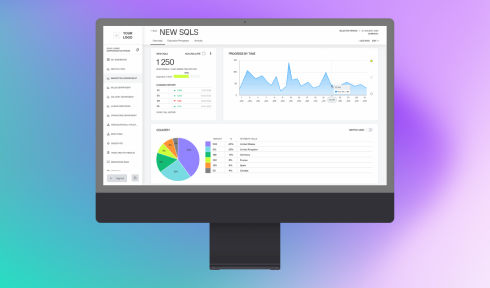Paraphrasing Bill Gates, the central concept of modern business development is speed. We’re talking about the rapid transition to the digital environment and the operational management of business processes. To win in this modern age, you must keep up with how consumers’ habits change.
For any company, controlling turnover, scaling, improving internal processes, motivating employees, and creating manageable and cohesive teams are all necessary. When a company grows, the number of employees, branches, and subdivisions grows. As a result, many workers need to regulate their interaction, management, and information exchange within teams, cultivating collective cohesion and motivating them for more productive work.
A tightly-knit team and a motivated workforce produce excellent results (a.k.a. desirable to consumers). A manager’s job is to create this level of performance possible for their team.
What we Mean by Business Process Automation for Employees
A business process does not cover every action in a company’s operations. What this refers to is systematically repeated activities that ensure productivity.
As a company grows, so do the number of employees and processes. Things get comprehensive, challenging, and mundane. A manager’s job or role to say in streamlining a team’s performance revolves around building out “processes” that make routine tasks like communication and daily actions related to reaching KPIs more comprehensible in order to reach business goals. When processes are organized well and roles clearly defined, team members are more likely to reach their individual goals, and thus the team’s goals, making them more satisfied with their work.
How Business Process Automation Can Influence Employee Motivation
Business process automation implies optimization and speeding up routine business tasks without human effort. If you’re a manager that cares about (1) the effectiveness of your team, and (2) how different tasks affect your team members, automation is something that you should be considering.
In short, and quite simply, business process automation (BPA) is software used to automate a particular task or flow of tasks. This means that an action can then be executed without human effort, more quickly, more affordably, based on if-this-then-that logic, and with fewer errors.
By implementing BPA, a manager can create an environment that allows a team to work more efficiently and helps individual employees save time and energy for learning and developing in ways that benefit them and their companies at higher levels.
Related Experience

Computools' Product: Scaler
Systemize and scale your business with our intuitive, secure Scaler Cloud Platform - all by yourself, guided by your own business intuition and our proven methodology
Many people are motivated by money, but a high salary is not enough to keep employees motivated all the time. Automation gives people the opportunity to be free from monotonous tasks and given the ability to do more income-producing activities.
When a manager faces the question, “Can you please increase my salary?” the situation typically means the team member in question wants more money for the same or less work. However, with the proper automation in place, managers can handle this question much better than without it. With automation, a manager can pay a team member more, not for doing the same tasks as before, but allowing them to do more productive tasks justifying the raise.
And at the same time, any manager faces the question of increasing the salary of each particular employee. The average employee will think about working less and getting more. And he will pressure the manager to pay him more and give him fewer tasks. In contrast, the system allows the employee to increase his wages not by contending with his manager but by reaching his goal. With this approach, the manager will always be an ally that helps him reach his goal, and in the end – the business will be more efficient and effective, will be able to provide higher compensation to performers, will allow attracting strong employees in terms of technical skills.

Computools
Software Solutions
Computools is an IT consulting and software engineering company that delivers innovative solutions to help businesses unlock tomorrow. Our clients represent a wide range of industries, including retail, logistics, finance, healthcare, and others.
Automation Makes Managing Teams More Streamlined
Once employees adapt to automation, team members become more productive and easier to manage. Studies also show that they are more inclined to motivation. However, there are cases of poor implementation. What does that mean? It’s when employees don’t use the new software correctly and neglect to do data entry properly (basically not using the tool). To prevent this from happening, I recommend some tips for implementing automation:
1. Explain to your team why you need particular automation so that they can see the benefits.
2. Automate processes that your business needs to automate.
3. Automate processes that integrate for a streamlined, end-to-end flow.
4. Keep cybersecurity and data privacy top of mind.
5. Choose a solution that can scale with business growth.
6. Implement changes incrementally.
7. Collect and analyze feedback.
8. Measure the outcome.
9. Introduce modifications when necessary.
Guided by these tips, you can choose business process automation that will meet your company’s requirements and the conditions for comfortable work. Monotonous tasks are depressing and draining for motivation.
The Advantages of Automation for Team Management
Your management team should always be open to innovation and operational improvement. Any business that does not constantly evolve eventually faces stagnation. Workflow automation makes employees’ work more efficient and eliminates the risk of human error. In addition, it makes business more attractive to investors. This is because automated processes allow you to see what’s most important in the industry, how to improve and scale it, and remove steps that don’t help achieve results.
Processes that are optimized allow businesses to grow and increase revenue. As your company grows, you can IPO!
Discover the benefits of automation for your business at info@computools.com.









“Computools was selected through an RFP process. They were shortlisted and selected from between 5 other suppliers. Computools has worked thoroughly and timely to solve all security issues and launch as agreed. Their expertise is impressive.”